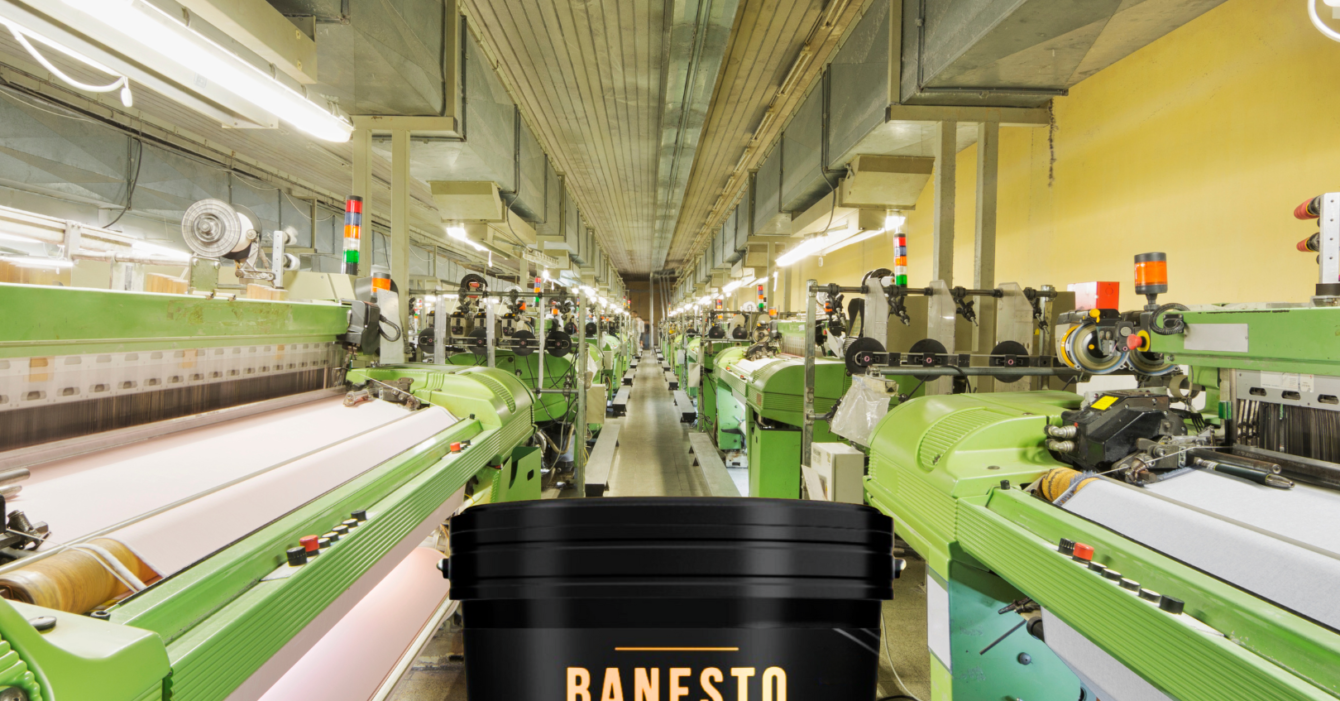At Banesto, we deeply understand and appreciate the intricate symphony of processes within the textile industry that transform raw materials into the final textile products. As a cornerstone of the global economy, this industry spans from clothing and home furnishings to technical, industrial, and nonwoven textiles. To ensure the smooth operation of the machinery driving this production, one fundamental element often overlooked yet crucial is the proper selection and use of lubricants.
In this blog, we delve into the vital role of lubricants in the textile industry, exploring their unique characteristics and the constant innovations we at Banesto bring to the world of textile lubrication.
Setting the Stage: Textile Industry in a Macro View
Before we delve into specifics, it’s essential to grasp the sheer scale and diversity of the textile industry. Employing millions of people worldwide, it transforms raw materials into an array of products that clothe us, decorate our homes, and serve various industrial applications. Each product category, from apparel textiles to technical textiles, demands a distinct set of processes, machines, and, consequently, specific lubricants.
Act One: Spinning the Thread of Creation
Our journey through the textile production process begins at the spinning stage, where raw cotton, wool, or synthetic fibers transform into yarn or thread—the building block of all textile products. High-speed rotating spindles subject to significant frictional forces carry out this transformation.
The use of spindle oils is critical at this stage. Our high-performance lubricants, formulated with quality base oils and carefully chosen additives, provide exceptional lubrication, reducing friction and offering cooling to these high-speed rotating spindles. With low viscosity and excellent washability characteristics, they leave no stain or residue that might hinder downstream processes or compromise the yarn’s quality. Banesto’s spindle oils offer superior friction reduction and wear protection, ensuring a more efficient spinning process and prolonging machinery lifespan.
Act Two: Weaving and Knitting – The Fabric of Life
Continuing our textile production journey, we arrive at the weaving and knitting stages, where threads metamorphose into fabric. Weaving, an intricate process involving interlacing threads, requires high-precision machinery operating at high speeds. Continuous movement and heavy loads can lead to wear and tear if not adequately lubricated.
Banesto’s weaving machine oils come to the rescue, formulated with select base oils and special additives to provide excellent film strength and anti-wear properties. Minimizing machine downtime and enhancing the finished fabric’s quality, these lubricants play a vital role.
The knitting process, another fascinating stage where needles and sinkers dance in tandem, also relies on lubricants to maintain the tempo of this dance. Banesto’s knitting oils, designed with optimal viscosity to withstand high speeds and loads without breaking down, offer excellent lubricity, stability, and resistance to oxidation.
Act Three: Dyeing and Finishing – Adding Life to the Fabric
The dyeing stage breathes life into textiles, exposing them to high temperatures, pressures, and various chemicals. These demanding conditions require lubricants that can withstand the heat – quite literally. Heat transfer oils, employed at this stage, must offer exceptional thermal stability and low vapor pressure.
Banesto’s heat transfer oils, formulated to these exacting specifications, ensure efficient machine operation under the most strenuous conditions. The final act in our textile production play is the finishing stage, where fabrics receive their final touches to enhance their aesthetic appeal, texture, and performance characteristics.
During this stage, the hydraulic systems of various machines come into play. High-quality hydraulic oils and greases are used to ensure these systems function effectively under varying conditions, offering excellent stability and resistance to deposit formation.
The Supporting Cast: The Role of Additives
Lubricants, in their pure form, play a commendable role. However, to tailor them to meet the specific requirements of each stage of textile production, specific additives are necessary. These substances serve various functions, such as improving viscosity, enhancing anti-wear properties, resisting oxidation, and more.
At Banesto, we heavily invest in researching and developing innovative additives to continually improve our lubricants’ performance and sustainability.
The Grand Finale: The Future of Lubrication in Textiles
Looking towards the future of the textile industry, the role of lubricants is set to become even more significant. Beyond keeping machines running smoothly, they have a profound impact on the quality of final products and the overall sustainability of operations.
At Banesto, we continuously innovate and improve our range of lubricants to meet the evolving needs of the textile industry. Our vision is to develop high-performance, environmentally friendly lubricants that will propel the textile industry towards a more sustainable and efficient future.
Through our work, we hope to enable the textile industry to reduce its environmental footprint, enhance machinery longevity, and improve the quality and variety of products it offers to the world. The road ahead is challenging but filled with opportunities. We at Banesto are excited to be a part of this journey and contribute to the next chapter of the textile industry’s rich and vibrant story.
#Banesto #TextileIndustry #LubricantsInTextile #TextileTechnology #InnovationInTextile #PerformanceLubricants #TextileManufacturing #TextileEfficiency #TextileSolutions #FutureOfTextiles








